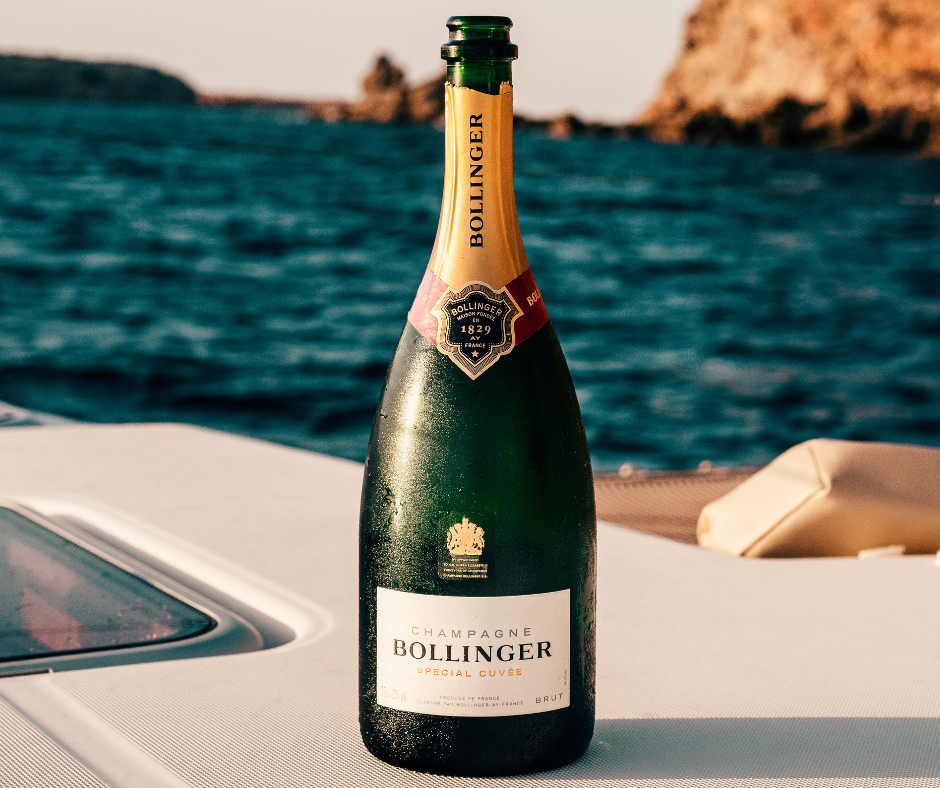Introduction
When it comes to wine, the bottle size matters. Understanding wine bottle dimensions is important for several reasons, including the impact of bottle size on aging and storage. So, How Tall Is a Bottle of Wine? In this article, we will explore why understanding wine bottle dimensions is important and delve into the effects of bottle size on aging and storage.
Why Understanding Wine Bottle Dimensions Is Important
Accuracy in Labeling: Understanding wine bottle dimensions is crucial for accurate labeling. Different bottle sizes have different names, such as standard, Magnum, or jeroboam. Knowing the exact dimensions of each bottle size ensures that labels reflect the correct volume of wine within, providing consumers transparency.
Marketing and Presentation: Wine bottle dimensions also play a significant role in marketing and presenting the product. Different bottle sizes can convey different messages and cater to various consumer preferences. For example, larger bottles like magnums or jeroboams are often associated with celebrations and special occasions, making them great options for gifting or displaying at events.
Storage and Cellaring: Understanding bottle dimensions is essential for proper storage and cellaring. Wine needs to be stored in a manner that allows for sufficient air circulation around the bottles. Larger bottle sizes occupy more space and may require specific storage solutions or considerations to maintain optimum aging conditions.
The Impact Of Bottle Size On Aging And Storage
Aging Potential: The size and shape of a wine bottle can affect its aging potential. Larger bottles typically age more slowly due to less oxygen exposure. This slower aging process can positively impact the wine’s development, allowing more complex flavors and aromas to develop over time.
Storage Considerations: Larger bottles may require special storage considerations due to their size and weight. They may need a different type of wine rack or cellar configuration to accommodate their dimensions. It’s important to ensure that the storage environment remains stable, with consistent temperature and humidity levels, to preserve the wine’s quality.
Serving Portions: Bottle size can also impact serving portions. Smaller bottles, like half-bottles or splits, are ideal for individual servings or when only a small amount of wine is desired. On the other hand, larger bottles are perfect for gatherings or parties, as they can serve more people.
In conclusion, understanding wine bottle dimensions is important for accurate labeling, marketing, presentation, and proper aging and storage. The impact of bottle size on aging and storage should be considered when selecting and storing wines, ensuring the best possible experience both in terms of taste and presentation. So, the next time you reach for a bottle of wine, take a moment to consider its dimensions and the story it tells.

Standard Wine Bottle Dimensions
How Tall Is a Bottle of Wine? Average Height And Width Of A Wine Bottle
Understanding the dimensions of a wine bottle is essential for accurate labeling, storage, and presentation. To answer the question, ‘How Tall Is a Bottle of Wine?’, the standard wine bottle typically has an average height of 12 to 14 inches (30 to 35 centimeters) and a width of 3 to 3.5 inches (7.5 to 9 centimeters). The shape of the bottle is characterized by a narrow neck and a wide body, allowing for easy pouring and proper aeration of the wine when served.
It is important to note that there can be variations in the dimensions of wine bottles, as different regions and wineries may have their unique bottle shapes and sizes. However, the standard dimensions mentioned above are widely accepted and commonly used in the industry.
Weight Of A Standard Wine Bottle
The weight of a standard wine bottle can vary depending on the glass thickness and design. On average, a standard wine bottle weighs around 2.75 pounds (1.25 kilograms). However, this weight can increase for bottles made from thicker glass or featuring decorative elements.
The weight of a wine bottle is not only important for transportation and handling but also for storage considerations. It is crucial to choose storage solutions that can support the weight of the bottles to prevent breakage and ensure the longevity of the wine.
In conclusion, understanding the dimensions of a wine bottle, including height, width, and weight, is crucial for accurate labeling, proper storage, and presentation of the wine. By being aware of these dimensions, wine enthusiasts and professionals can make informed decisions when selecting, storing, and serving their favorite wines. So, next time you enjoy a glass of wine, take a moment to appreciate the thought and craftsmanship that goes into the bottle’s design.
Variations In Size
Different Sizes Of Wine Bottles Available
Wine bottles come in various sizes, each with its unique name and purpose. Understanding these sizes is important, as it can affect the aging process, serving portions, and overall presentation of the wine. Here are some common wine bottle sizes:
- Standard or 750ml: This is the most commonly found size in the market. It holds approximately 25 fluid ounces of liquid, equivalent to about five glasses of wine. These bottles are ideal for everyday consumption or as a gift.
- Magnum or 1.5L: A magnum bottle is twice the size of a standard bottle, holding 1.5 liters of wine. This size is often used for special occasions or when serving wine to a larger group. It allows the wine to age more slowly due to the larger volume of liquid.
- Double Magnum or 3L: The double Magnum is four times the size of a standard bottle, holding 3 liters of wine. This size is commonly used for celebrations or events where a larger quantity of wine is needed.
- Jeroboam or 5L: The jeroboam is equivalent to five standard bottles containing 5 liters of wine. It is often used for gatherings or parties requiring more wine.
- Salmanazar or 9L: The Salmanazar is equal to twelve standard bottles, holding 9 liters of wine. This size is typically reserved for special occasions or as a centerpiece in wine collections.
Importance Of Bottle Size For Different Occasions
The size of the wine bottle can play a significant role in different occasions and settings. Here are a few reasons why bottle size matters:
- Gifting: Choosing the right bottle size for gifting can make a lasting impression. A standard 750ml bottle is often a safe choice, but a magnum or larger bottle can show generosity and make the gift more memorable.
- Dinner Parties: Larger bottles such as magnums or jeroboams are perfect for dinner parties with multiple guests. They offer convenience by reducing the need for frequent refills, and they create a sense of celebration and abundance.
- Cellaring and Aging: Larger bottles generally age more slowly than standard bottles due to the larger volume of wine and the reduced oxygen-to-wine ratio. This can result in a more balanced and complex flavor profile over time.
- Special Occasions: Using larger bottle sizes for special occasions adds a touch of grandeur and emphasizes the event’s significance. It can be a great conversation starter and create a memorable guest experience.
In conclusion, wine enthusiasts and professionals must understand the various sizes of wine bottles and their importance for different occasions. Whether for gifting, serving at a dinner party, or aging in a cellar, the right bottle size can enhance the overall experience and make a statement. So, next time you select a bottle of wine, consider the size and its impact on the occasion to ensure a delightful experience.

Factors To Consider
How Bottle Height Affects The Aging Process
The height of a wine bottle can significantly impact the aging process and the overall quality of the wine. When it comes to wine storage, the size and shape of the bottle matter. One common misconception is that the height of a wine bottle affects its aging potential. However, the truth is that a bottle’s height does not directly correlate with how well a wine will age. The aging potential of a wine depends more on factors such as the wine’s acidity, tannins, alcohol content, and overall quality.
That being said, the shape and size of the bottle can indirectly influence the aging process. Bottles with taller necks tend to have a longer aging potential because they allow sediment accumulation at the bottom. This is especially important for red wines that benefit from aging and the natural process of maturing. The sediment settles at the bottom of the bottle, away from the wine, ensuring a clearer and more enjoyable pour.
The Influence Of Bottle Width On Storage Needs
The width of a wine bottle, also known as its girth or circumference, can impact storage needs. Wider bottles occupy more space and require larger wine racks or storage areas. They can be more challenging to fit into standard wine coolers or cellars with limited space. It’s important to consider the width of the bottle when planning storage for your wine collection.
Additionally, wider bottles may have a larger cork or closure, which can affect the aging process. The closure size can impact the rate oxygen interacts with the wine. A larger closure may result in a slower oxygen exchange, contributing to slower aging and preservation of freshness and flavor.
Regarding wine bottle widths, it’s essential to ensure that your storage area can accommodate the size and shape of the bottles you plan to store. Consider investing in adjustable racks or consulting with a professional wine storage provider to maximize the use of your available space.
Understanding the dimensions of wine bottles, including their height and width, can help wine enthusiasts and professionals make informed decisions about storage and aging. While bottle height may not directly impact the aging process, the shape and size of the bottle can indirectly influence the accumulation of sediment and the overall storage needs. By considering these factors, wine lovers can enhance their wine collection and ensure the best possible enjoyment of their wines over time.
Enhancing The Drinking Experience
Understanding A Wine Bottle’s Specifications
When it comes to wine, the bottle size matters. Understanding the dimensions of a wine bottle is essential for wine enthusiasts and professionals alike. While the height of a bottle may not directly impact the aging process, other factors, such as its shape and size, can significantly influence the overall drinking experience.
Wine bottles come in various sizes, each serving a different purpose. The standard wine bottle holds 750 milliliters, equivalent to about five glasses. However, larger formats are available, such as magnums (1.5 liters) and Jeroboams (3 liters), often used for special occasions or aging high-quality wines.
The Role Of Bottle Dimensions In Enhancing Enjoyment
The dimensions of a wine bottle play a role in enhancing the enjoyment of the wine. For example, larger bottles have a slower aging process because they hold more wine, allowing the flavors to develop and mature over time. Additionally, larger bottles are perfect for sharing with friends or during festive gatherings.
On the other hand, smaller bottles, such as half-bottles and splits, are ideal for individual servings or when you want to sample different wines without committing to a full bottle. They are also convenient for travel or picnics.
The shape of the bottle can also impact the drinking experience. For instance, sparkling wines and champagne are typically bottled in a thicker, heavier glass to withstand the pressure from the carbonation. The distinctive shape of these bottles, with their punt at the bottom, adds elegance, allows for easier pouring, and enhances the presentation.
Furthermore, wine labels and branding can be influenced by the dimensions of the bottle. The label size and placement often vary based on the bottle’s shape and size, ensuring the branding is aesthetically pleasing and informative.
In conclusion, understanding wine bottle dimensions is crucial for enhancing the drinking experience. Whether choosing the right size for a special occasion or considering the shape of a particular type of wine, these factors can significantly impact how we enjoy and appreciate wine. So, the next time you uncork a bottle, take a moment to appreciate the thought and design that went into its size and shape and let it enhance your overall wine-drinking experience.

Conclusion
Understanding ‘How Tall Is a Bottle of Wine?’ is essential for enthusiasts and professionals. It provides insights into the amount of wine in each bottle and its impact on the aging process, storage considerations, and overall drinking experience. Whether you’re collecting wine or simply enjoying a bottle with friends, the size and shape of the bottle can make a difference in how the wine develops over time and how it tastes when you finally uncork it.
The Significance Of Wine Bottle Dimensions
The height and width of a wine bottle play a crucial role in preserving the wine’s integrity and ensuring optimal storage conditions. To answer ‘How Tall Is a Bottle of Wine?’, the height of a standard wine bottle typically ranges from 11.5 to 12.5 inches, but variations exist depending on the type and size of the bottle. Different wine regions and countries may have their regulations and standards for bottle dimensions.
Overall Impact On Aging, Storage, And Drinking Experience
The width of a wine bottle, also known as the shoulder width, is particularly important for aging and storage. A wider bottle provides a larger surface area of wine in contact with the cork, allowing for a more gradual and consistent maturation process. This results in a smoother and more balanced flavor profile as the wine ages.
Additionally, certain wine varieties, such as red wines, benefit from the extra space provided by wider bottles. The increased width allows for better air circulation inside the bottle, reducing the risk of musty odors or off-flavors developing due to the lack of oxygen flow.
Considering wine bottle dimensions also enhances the overall drinking experience. The bottle’s size and shape can impact how the wine is poured and served, influencing the interaction between the wine and the drinker. It adds an aesthetic appeal and can contribute to the enjoyment and appreciation of the wine.
In conclusion, understanding wine bottle dimensions is more than just knowing the measurements. It provides valuable information about the wine’s aging potential, storage requirements, and overall drinking experience. So, the next time you choose a bottle of wine, take a moment to consider its dimensions and how they can enhance your enjoyment of the wine inside.
FAQ: How Tall Is a Bottle of Wine – Bottle Size Matters: Understanding Wine Bottle Dimensions
Q: How Tall Is a Bottle of Wine?
A: A standard bottle of wine, also known as a “750ml” or “0.75L” bottle, is typically around 11.5 inches (29.2 cm) tall.
Q: What is the smallest size of a wine bottle?
A: The smallest size of a wine bottle is called a “Piccolo” or “Split,” which holds 187.5ml of wine. It is equivalent to a single glass of wine or champagne.
Q: What is the largest size of a wine bottle?
A: The largest size of a wine bottle is known as a “Goliath” or “Primat,” which holds 27 liters of wine. It is equivalent to 216 glasses or 36 standard wine bottles. This size is rare and weighs around 70kg, requiring multiple people to pour.
Q: How tall is a magnum wine bottle?
A: A magnum bottle holds 1.5 liters of wine, equivalent to two standard bottles. Its height is usually around 14 inches (35.6 cm).
Q: Are wine bottle sizes named after historical figures?
A: Yes, traditional different-sized wine bottles have been named after biblical kings and historical figures. Some examples include Jeroboam (3L), Rehoboam (4.5L), and Methuselah (6L).
Q: How did wine bottle sizes get their names?
A: The names of wine bottle sizes were given based on historical significance and biblical references. The exact origins of these names are not well-documented.
Q: Why do wine bottles come in different sizes?
A: Wine bottles come in various sizes to cater to different occasions and preferences. Smaller sizes, like the piccolo, are commonly used for personal servings or as gifts, while larger sizes, like magnums or Jeroboams, are often seen at events or for aging wine.
Q: What is the history of wine bottle sizes?
A: In the 1700s, wine bottles were invented as we know them today. Before industrial production, a standard-size bottle was created by glass blowers in one blow, which became known as the “fifth” bottle. The names of different-sized bottles emerged over time and were inspired by historical figures.
Q: Are there other wine bottle sizes besides those mentioned?
A: Yes, there are many other wine bottle sizes, including half bottles (375ml), standard bottles (750ml), double magnums (3L), Jeroboams (5L), and more. This guide provides a general overview, but the variety of bottle sizes is extensive.
Q: How can understanding wine bottle dimensions make me a savvier wine patron?
A: Understanding wine bottle dimensions can help you choose the appropriate size for different occasions, plan the number of servings needed, and understand the historical significance behind the names. It can also enhance your knowledge and appreciation of wine culture.

Andre Lotz immigrated to the United States from South Africa almost 20 years ago. Still, he didn’t feel truly at home until he settled in Mobile—a city that reminds him of his childhood home of Fish Hoek on the southern cape of Africa.

